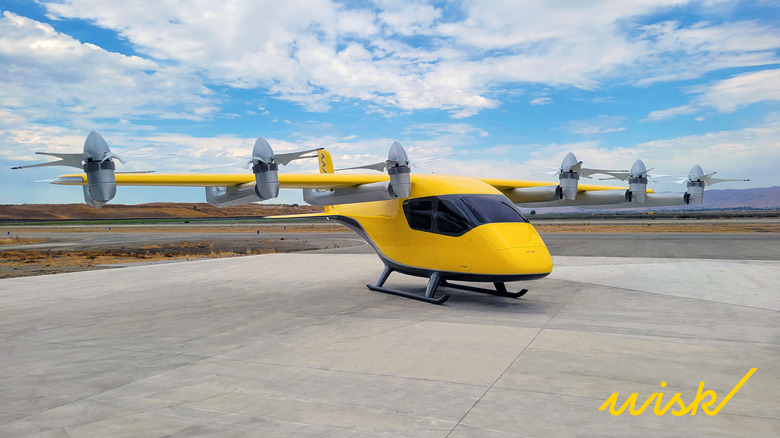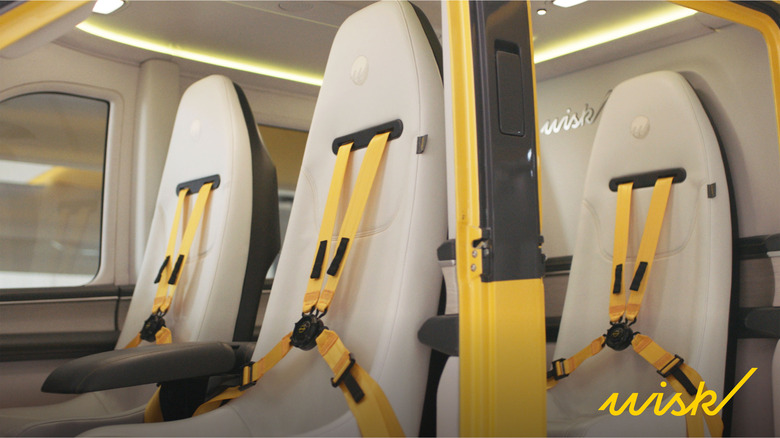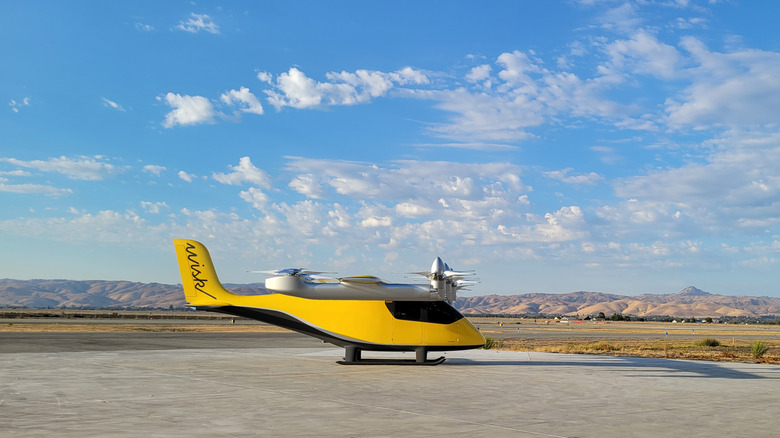This Is The Flying Taxi That Boeing Thinks Is The Future
The average American spends almost 54 hours a year stuck in traffic, according to CNN. In major cities like San Francisco, the average commuter spends almost 102 hours (equivalent to 4 days) in stalled traffic. If you think that's bad, things could get worse and by 2025, and the economy is projected to lose about $200 billion annually due to traffic congestion. A few solutions have been proposed. For instance, Elon Musk thinks an underground tunnel could help to ease congestion. On the other hand, flying taxis could also be a viable solution.
Wisk is one of the companies developing a flying taxi. It was formed after a joint venture between Boeing and Kitty Hawk (via Geek Wire). But now that Kitty Hawk closed down, Wisk is solely backed by Boeing. Even with Kitty Hawk shutting down, Wisk has leveraged its experience developing five generations of 'flying cars' since 2010. Now Wisk has revealed the details of its 6th generation electric vertical take-off and landing aircraft (eVTOL) that could one day be used by city dwellers looking to escape road traffic.
It's an autonomous flying taxi
In a press release, the Boeing-backed company unveiled details of its 6th generation flying taxi pending FAA certification. It's an autonomous eVTOL that can accommodate four passengers and has plenty of storage space. Since it's a self-flight eVTOL, passengers can ride it without a pilot on board. However, a human pilot remotely monitors multiple eVTOLs on the ground, ready to intervene if the situation goes awry.
Wisk says Generation 6 is "the most advanced air taxi in the world ... designed to exceed today's rigorous aviation safety standards of a one-in-a-billion chance of an accident." The eVTOL is meant to take off and land like a helicopter, but unlike one, it's made with 12 propellors mounted on a raised wing "to improve safety, stability, and the passenger experience." According to Wisk, it took over 1600 test flights before developing its latest eVTOL — and so far, there have not been any accidents.
Wisk says it will be affordable
Even though the flying taxi is yet to be approved by the FAA, Wisk promises that it will charge $3 per mile for every passenger. If that's true, it will be affordable for most passengers, considering that's almost the same rate you would be for an Uber Black in a major city like New York (via Taxi How Much). Wisk hasn't revealed the production cost of its flying taxi, but it comes with an electric range of up to 90 miles and cruises at an altitude of between 2,500 to 4,000 feet. Wisk's Generation 6 flying taxi is also capable of flying at 120 knots — equivalent to 138 mph.
Beyond that, passengers can charge their smartphones and access Wi-Fi on board. If you're worried about the noise, Wisk says that the flying taxi will be quieter than a typical aircraft. At the moment, there is no confirmation about if or when Generation 6 will receive certification by the FAA. The approval process can be long and tedious. But we do know it could be a game changer to evade ground traffic in the future.


